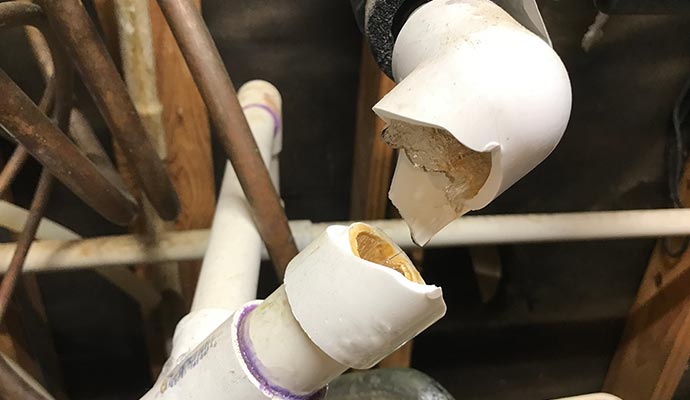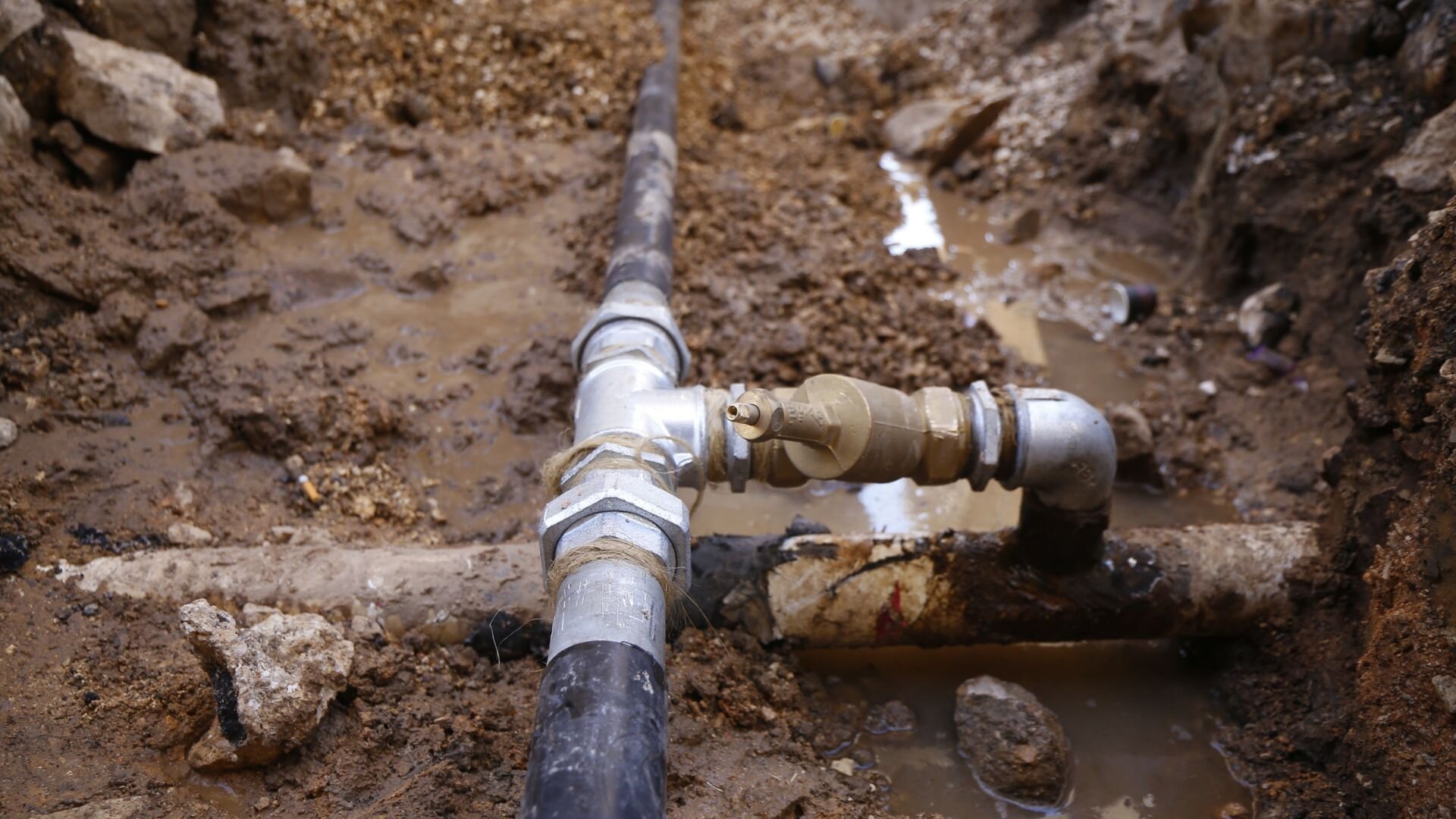Stopping Ruptured Water Lines: Crucial Tips to Safeguard Your Plumbing
Preventing burst pipelines is a vital issue for property owners, especially during cooler months when the risk of cold is heightened. Executing critical actions such as proper insulation, routine evaluations, and keeping constant indoor temperature levels can substantially minimize the probability of pipe failure. In addition, understanding emergency treatments equips property owners to respond quickly to possible plumbing problems. Many are not aware of the certain vulnerabilities that their pipes may face. Discovering these susceptabilities can supply invaluable insights right into protecting your plumbing system successfully.
Understand Pipeline Vulnerabilities
Comprehending pipe vulnerabilities is necessary for efficient pipes upkeep and preventing costly damages. Numerous aspects add to the vulnerability of pipes to bursts, consisting of product structure, age, and ecological problems. Older pipelines, particularly those made from galvanized steel or polybutylene, typically break down in time, bring about boosted risk of tears and leaks.
Temperature variations can additionally considerably impact pipe honesty. In colder climates, water entraped in pipes can ice up, exerting and expanding pressure on the pipeline walls, which may eventually lead to a ruptured. High water pressure can strain pipes, particularly at bends and joints, heightening the possibility of failure.

Insulate Pipes Effectively
Correct insulation of pipelines is crucial for avoiding freezing and subsequent ruptureds throughout winter (burst pipe). Shielding your plumbing system efficiently safeguards against temperature drops that can result in pricey damages. Begin by recognizing at risk locations where pipelines are exposed to exterior temperature levels, such as cellars, attic rooms, and outside wall surfaces
Usage foam pipeline insulation sleeves or cover insulation tape around these areas to offer a protective barrier. Make sure that all sections of the pipes, especially those with restricted warmth direct exposure, get appropriate insulation. Pay unique attention to fittings and joints, as these are more susceptible to cold.
When protecting, it's important to pick materials that satisfy regional structure codes and are ideal for the details setting. As an example, fiberglass insulation is typically suggested for its thermal resistance buildings - burst pipe. Furthermore, take into consideration utilizing heat wires or tape in severe conditions, which can be plugged in to give supplementary warm
Routinely inspect shielded pipelines for any type of signs of wear or damages, as compromised insulation can lessen its performance. By taking these positive measures, you dramatically click to find out more decrease the threat of pipeline bursts, making certain a trusted plumbing system throughout the winter months.
Maintain Regular Temperature
A secure interior temperature level is crucial for stopping burst pipelines throughout the frigid months. When temperatures decline, water within pipelines can ice up, increasing and developing pressure that might ultimately trigger the pipes to burst.Using a programmable thermostat can help take care of interior temperature levels properly, making certain that areas with pipes remain warm also when the residence is empty.
Additionally, it is prudent to allow taps to drip slightly throughout extreme cold snaps. This minor circulation of water can protect against cold by reducing pressure within the pipes. Throughout especially severe weather condition occasions, think about temporarily putting on hold any nighttime setbacks on your thermostat to keep a consistent warm setting. By applying these approaches, house owners can substantially decrease the risk of pipe ruptureds and protect their plumbing systems versus the severe winter season elements.
Consistently Examine Pipes
Normal assessments of pipes systems are essential for stopping ruptured pipelines and preserving total home integrity. Throughout these inspections, it is essential to check out visible pipelines for indications of deterioration, leakages, or put on.
Furthermore, evaluating connections and joints is crucial, as these factors are frequently at risk to leakages. Homeowners ought to also evaluate water stress levels, as excessive pressure can strain the plumbing system and boost the threat of pipe bursts.
Consider organizing professional pipes examinations at the very least once a year, specifically prior to winter, to ensure your system is prepared for chillier temperature levels. By being proactive in your method, you can protect your home against the costly and disruptive repercussions of straight from the source burst pipes.
Know Emergency Situation Procedures
Recognizing emergency situation procedures is vital for every single property owner, especially after conducting normal pipes inspections. Being planned for a plumbing emergency can considerably mitigate damages and save expenses. First, locate your major water shut-off valve; it is typically located near the water meter or where the main line enters your home. Familiarize on your own with its procedure, as turning off the water rapidly can protect against comprehensive flooding.
Next, keep crucial devices useful. A plumbing emergency situation package ought to consist of a wrench, plunger, and towels, in addition to a flashlight and a pail for small leaks. Furthermore, find more information consider having the call information for a trusted plumbing technician conveniently available, must the situation intensify past your control.
If you identify a leakage or burst pipeline, immediately shut off the water system and alert your plumber. Record the damages with photographs for insurance purposes. Recognize the indications of prospective pipes issues, such as unusual water pressure fluctuations or damp spots on walls
Eventually, positive understanding and quick action are important in taking care of plumbing emergencies, ensuring your home remains safeguarded and lessening prospective damage.

Final Thought
In final thought, preventing ruptured pipes demands a multifaceted approach that consists of understanding pipe susceptabilities, proper insulation, keeping consistent interior temperatures, normal assessments, and knowledge of emergency situation treatments. By carrying out these important techniques, the threat of plumbing failings can be significantly minimized, thereby making sure the longevity and efficiency of the plumbing system. Proactive procedures not just protect against possible damage but likewise add to general water preservation and the defense of home.
In colder climates, water caught in pipelines can freeze, exerting and broadening stress on the pipeline walls, which may eventually lead to a ruptured. When temperatures decrease, water within pipelines can ice up, producing and increasing pressure that might ultimately trigger the pipes to ruptured. By implementing these techniques, house owners can dramatically reduce the risk of pipe bursts and secure their pipes systems versus the rough winter months aspects.
